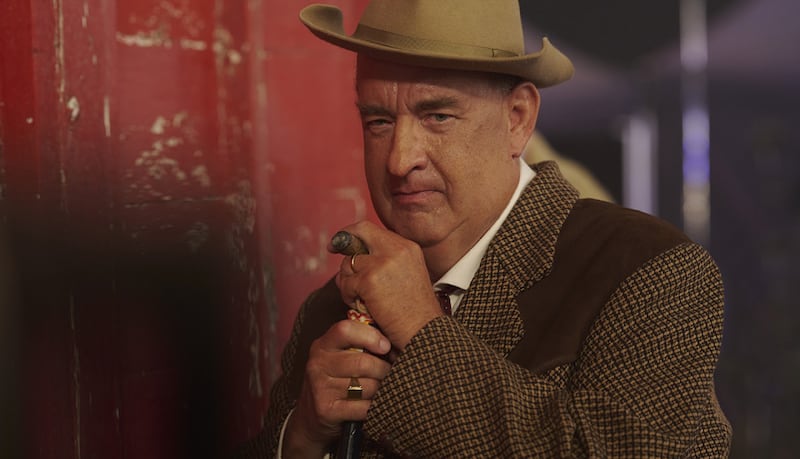Balance and reason are rarely the columnist’s friend, but the pocket furore surrounding Emma Thompson’s casting in the upcoming Matilda should remind us there is no easy answer to the question of whether actors should be as heavy, as gay, as abled or as tall as the character they’re playing. No responsible director would ask a white actor to “black up” when playing a person of colour. That seems settled. But the rest of the conversation takes place in a shifting haze of confusion.
The current example need not detain us long. It has been observed that Thompson has donned padding to play the demonic Miss Trunchbull in the film version of Dennis Kelly and Tim Minchin’s musical take on Roald Dahl’s durable novel. “Do we really need another skinny actress in a fat suit?” Emmie Harrison-West wondered in Metro. Good Morning Britain was among the TV and radio shows picking up the baton.
There are two interlocking arguments here. One is that Dahl is among those many creators who conflate physical appearance with personality. Ms Harrison-West points to the stunningly unamusing flashbacks in Friends that saw Courtney Cox pull on prosthetics to play a sad, greedy, generally useless fat version of the contemporaneously slim Monica. That is a fair point. No less a figure than Charles Dickens was guilty – think of Quilp in The Old Curiosity Shop – of equating disability with malignity. That is also worth pondering and regretting.
The second, slipperier argument is that only plus-size people should play plus-size characters (and so on). “Plus-sized women have to work harder to be recognised for jobs that should, by right, be theirs,” Ms Harrison-West says of the Matilda case. The difficulty here is that Dahl’s Miss Trunchbull is not exactly fat – or, stretching the definition, not only fat. “She had once been a famous athlete, and even now the muscles were still clearly in evidence,” Dahl writes. “You could see them in the bull neck, in the big shoulders, in the thick arms, in the sinewy wrists and in the powerful legs.”
Do we really need 10,000 steps a day to stay healthy?
Laura Kennedy: This homesickness is not a yearning for return but rather for reconnection
Pierce Brosnan: ‘I had no qualifications. I was really behind the eight ball – without a mother, without a father’
One to One: John & Yoko review – Watch this film at a good cinema to really appreciate its seat-juddering sound
Pam Ferris, who played the character in the 1996 film version, was, though larger than Emma Thompson, not much closer to the physical type described. There was, in all the debate last week, little mention that Bertie Carvel – a MAN! – won an Olivier Award for playing Miss Trunchbull in the excellent stage musical. The character is physically unfeasible and, in the style of pantomime, invites the broadest, most dramatic transformations. Excuse the cliché, but that particular hill is not worth dying on.
The wider argument is, however, not going to go away. By coincidence (as we shall see, in some ways an unfortunate one), Tom Hanks recently addressed a related issue in an interview with the New York Times. “Could a straight man do what I did in Philadelphia now?” he asked of his performance as a gay lawyer with Aids in that 1993 film. “No, and rightly so. The whole point of Philadelphia was, don’t be afraid. One of the reasons people weren’t afraid of that movie is that I was playing a gay man. We’re beyond that now, and I don’t think people would accept the inauthenticity of a straight guy playing a gay guy.” It took a few days for the veteran actor and director Simon Callow, himself gay, to describe Hanks’s argument as a “dangerous idea”. It is hard to easily dismiss the views of a man who was fighting the good cause for the Gay Sweatshop theatre company in the less-hospitable early 1970s.
In a neat irony you couldn’t make up, Hanks’s chat with the New York Times formed part of the promotional campaign for a film that finds the actor performing in, erm… a fat suit. That’s him under those weighty prosthetics as the oleaginous music impresario Colonel Tom Parker in Baz Luhrmann’s Elvis. Going back to the Metro article, should that job not “rightly” have gone the way of a plus-size actor?

Transmogrification
No “gotcha” is intended. Who would wish such a thing on the lovely Tom Hanks? The point is that, like so many skirmishes in the current culture wars, the debate about representation on screen is too often plays out in uncomplicated binaries. It is not unreasonable to favour gay actors when casting gay roles. But, as Callow points out: “Think of all the wonderful performances of people who are not gay have given: John Hurt, Daniel Day-Lewis, Jake Gyllenhaal and Heath Ledger in Brokeback Mountain.” Larger actors deserve to be considered for roles that suit their body type, but Thompson’s current transmogrification looks to fit the brief perfectly.
Disability is a trickier issue. The conversation on “blacking up” seems correctly to have been closed. But the art of acting has always been tied up with transformation. Would we really prefer a more naturally jowly, more authentically Italian actor than the German-Dutch-Irish-American Marlon Brando in The Godfather? These quandaries are not easily tidied away and it does nobody any good to pretend otherwise.


















